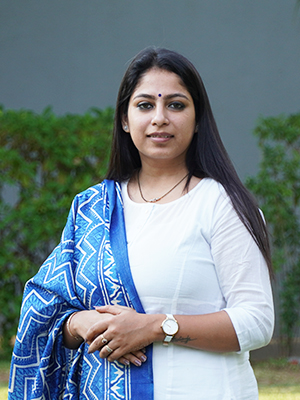
Dr. Ritika Vivek Ladha
Designation: Assistant Professor
Academic Area: Network Security, Artificial Intelligence, Data Science
Brief Profile:
Ritika Ladha is associated as Assistant Professor in Information and Communication Technology department at Adani University. Her expertise is in the area of network security and deep learning. She has over seven years of experience in academics. Her research interests include Computational Intelligence Techniques, Machine Learning and its Applications, and Network Security. She has published several research papers in international journals and conferences and has served as reviewer to journals like IEEE Internet of Things journal, Neural Computing and its Applications, Springer, Ambient Intelligence and Humanized Computing, Springer, to name a few. She is pursuing her PhD. from Nirma University and has completed her M.Tech in Information and Network Security from Nirma University in 2015.
- 2018–Present Ph.D Scholar, Nirma University, 2013–2015 M.Tech.
- Nirma University. (Information and Network Security, CGPA: 8.42), 2009–2013 B.E.,
- A.D Patel Institute of Technology, Vallabh Vidhyanagar, Gujarat Technological University. (Computer Science and Engineering, CPI: 8.14),
- HSC March 2009, St. Xavier’s School, Jamnagar (77.60%),
- SSC March 2007, St. Ann’s High School, Jamnagar (89.69%)
- 2015–2018 Assistant Professor, Silver Oak College of Engineering and Technology, Gujarat Technological University.
- 2018-2021 Teaching Assistant, Nirma University
- 2022-Present Visiting Faculty/Assistant Professor, Adani University
- London Press Journals for Rosalind Membership
- Network Security,
- Intrusion Detection System
- Deep Learning and its Applications
- Intrusion Detection Systems
- Cyber Security
- Deep Learning
Thakkar, A., & Lohiya,
R. (2022)
Fusion of statistical importance for feature selection in Deep Neural Network-based Intrusion Detection System, Information Fusion, Elsevier
Thakkar, A., & Lohiya,
R. (2021)
Analyzing fusion of regularization techniques in the deep learning-based intrusion detection system, International Journal of Intelligence Systems, Wiley
Thakkar, A., & Lohiya,
R. (2021)
A survey on intrusion detection system: feature selection, model, performance
measures, application perspective, challenges, and future research directions,
Artifical Intelligence Review, Springer.
Lohiya, R., & Thakkar,
R. (2021)
Intrusion Detection Using Deep Neural Network with AntiRectifier Layer. International Conference on Applied Soft computing and Communication Networks, Springer
Thakkar, A., & Lohiya,
R. (2021)
Attack classification using feature selection techniques: a comparative study.
Journal of Ambient Intelligence and Humanized Computing, 12(1), 1249-1266.
Lohiya, R., & Thakkar,
A. (2020)
Application Domains, Evaluation Datasets, and Research Challenges of IoT:
A Systematic Review. IEEE Internet of Things Journal.
Thakkar, A., & Lohiya,
R. (2020)
A Review on Machine Learning and Deep Learning perspectives of IDS for IoT:
Recent Updates, Security Issues, and Challenges. Archives of Computational
Methods in Engineering.
Thakkar, A., & Lohiya,
R. (2020)
Role of swarm and evolutionary algorithms for intrusion detection system: A survey. Swarm and Evolutionary Computation, 53, 100631.
Thakkar, A., & Lohiya,
R. (2020)
A Review of the Advancement in Intrusion Detection Datasets. Procedia Computer Science, 167, 636-645.
Joshi V., & Bhattacharya S., & Lohiya
R. (2017)
Spectral unmixing with hyperspectral datasets of AVIRIS-NG. In2017 International Conference on Intelligent Computing, Instrumentation and Control
Technologies (ICICICT) 2017 Jul 6 (pp. 263-267). IEEE.
Lohiya R., & Mandowara A., & Raolji
R (2017)
Privacy Preserving Data Mining: A Comprehensive Survey. International
Journal of Computer Applications. 2017;975:8887.
Lohiya, R., & John, P.,& Shah,
P. (2015)
Survey on Mobile Forensics. International Journal of Computer Applications,
118(16)
Lohiya, R., & Shah, P.
(2015)
Face recognition techniques: A survey for forensic applications. International Journal of Advanced Research in Computer Engineering & Technology
(IJARCET). 2015 Apr;4(4)
